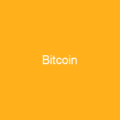Ethereum: The Blockchain That Transformed Decentralized Applications
Imagine a world where transactions are secure, transparent, and tamper-proof—where every piece of data is stored on an immutable ledger. That’s the promise of Ethereum. Conceived in 2013 by Vitalik Buterin and other visionary founders, Ethereum has since become one of the most influential blockchain platforms in the world. It’s not just a cryptocurrency; it’s a decentralized platform that enables developers to build complex applications with smart contracts.
The Genesis of Ethereum
Development work began in 2014, and on July 30, 2015, the network went live. This was no small feat; it marked the birth of a new era where decentralized applications (dApps) could thrive. The initial launch was a testament to the potential of blockchain technology, but it wasn’t without its challenges.
From Proof-of-Work to Proof-of-Stake
The transition from proof-of-work (PoW) to proof-of-stake (PoS) in September 2022 was a monumental shift. This change not only reduced energy usage by an astounding 99% but also paved the way for more sustainable and scalable blockchain solutions.
Key Features of Ethereum
Ethereum’s core features include smart contract functionality, non-fungible tokens (NFTs), and decentralized finance (DeFi) applications. These elements have transformed how we think about digital assets and financial transactions. Let’s dive into some of the highlights:
- Smart Contracts: Think of them as self-executing contracts with the terms directly written into code. They automate processes, reducing the need for intermediaries.
- NFTs: These unique digital assets have revolutionized everything from art to gaming. Each NFT is one-of-a-kind and can be bought, sold, or traded on the blockchain.
- DeFi Applications: From lending platforms like Aave to decentralized exchanges (DEXs) such as Uniswap, DeFi has democratized finance by offering services without traditional financial institutions.
The Evolution of Ethereum
Ethereum’s journey is a testament to its adaptability and innovation. From the initial launch in 2015 to the transition to Eth2 in 2022, each upgrade brought new functionalities and improvements. The Enterprise Ethereum Alliance (EEA) further solidified Ethereum’s position as a viable solution for enterprise applications.
Notable Milestones
Several milestones stand out in the history of Ethereum:
- The DAO Incident: In 2016, The DAO raised $150 million but was exploited. This led to a contentious hard fork and the birth of Ethereum Classic.
- CryptoKitties: Launched in 2017, this blockchain game popularized NFTs and showed the potential for decentralized applications beyond finance.
- Ethereum 2.0 (Eth2): A set of upgrades aimed at transitioning to proof-of-stake and scaling the network with execution sharding and an improved EVM architecture.
The Future of Ethereum
As we look ahead, Ethereum continues to evolve. The transition to Eth2 has already begun, and future upgrades will likely bring even more innovation. With its vast ecosystem and growing community, Ethereum remains a beacon for decentralized technology.

Ethereum is more than just a blockchain; it’s a platform that has transformed the way we think about digital assets and decentralized applications. As technology continues to advance, Ethereum will undoubtedly play a crucial role in shaping the future of finance and beyond.
You want to know more about Ethereum?
This page is based on the article Ethereum published in Wikipedia (retrieved on December 6, 2024) and was automatically summarized using artificial intelligence.






